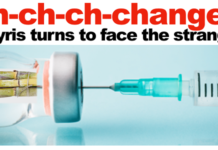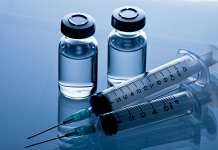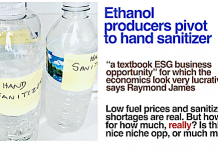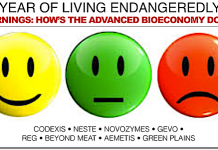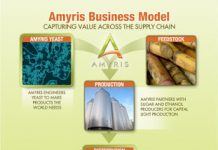Jim Lane
As Dyadic cashes out of industrial biotech and retains a C1 license for pharma, DSM and Syngenta also announce a partnership. Companies are girding their loins for the long haul. The Digest takes a look,
In Florida, DuPont (DD) Industrial Biosciences will acquire substantially all of the enzyme and technology assets Dyadic’s (DYAI) Industrial Technology business for $75 million, including Dyadic’s C1 platform, a technology for producing enzyme products used in a broad range of industries.
DuPont has granted back to Dyadic co-exclusive rights to the C1 technology for use in human and animal pharmaceutical applications, with exclusive ability to enter into sub-license agreements in that field. DuPont will retain certain rights to utilize the C1 technology for development and production of pharmaceutical products, for which it will make royalty payments to Dyadic upon commercialization.
The Agreement provides for $8 million of the purchase price to be held in an escrow account for 18 months to ensure Dyadic’s obligations with respect to certain indemnity claims and working capital adjustments. Dyadic expects to utilize approximately $66 million of its net operating loss carryovers to substantially offset the gain realized from this transaction. Closing is expected by the end of 2015.
Dyadic, post-closing
Bootom line, Dyadic has $5-$6M cash in the bank, this adds $75M, debt is around $10M of which around $8.6 is convertible. Worst case scenario that is, none of the debt converts to equity we’re looking at a company with a lot of cash, a C1 license for the pharma sector, and a lawsuit. In some ways, it feels like a shell, until Dyadic ramps up in pharma.
To that end, we see in the official release on the transaction: Dyadic also intends to continue its existing programs with Sanofi Pasteur and its involvement within the EU-funded ZAPI program. Dyadic plans to focus its research programs on the development and manufacturing of human and animal vaccines, monoclonal antibodies, biosimilars and/or biobetters, and other therapeutic proteins.
What’s that code for? “Hopefully., we’ll come up with something amazing with Sanofi and they’ll buy us,” or possibly “we’ll come up with amazing things elsewhere in pharma and someone else will buy us”. In the interim, Dyadic retains the right to sub-licemse, so stand by for more developments with the C1 platform.
DuPont, post-closing
Overall, a big win for DuPont even if not bad at all for Dyadic. Dyadic, before it fell into the corporate tussle that prompted the Greenberg Trairig lawsuit and some heft 7-figure settlements already, was trading at $5.30 per share based on today’s shareholdings, that would be a market cap of $164 million.So, DuPont picked up a nice bargain. It has the Abengoa license and BASF to generate revemue right away, and DuPont is bound to take the C1 platform to new heights.
How negative can investors get?
Overall, Dyadic took a big jump in trading, but way short of what they should have received. Here’s a company that is going to have $70M in free cash on its balance sheet, has a good lawsuit and a license to a valuable technology, and has a market cap of $46M. That’s a down in the dumps investor. By the same investment logic, Facebook would be trading at $3.63 instead of $109.
Status of Professional Liability Litigation
The Agreement provides that Dyadic will retain all of the potential rights and obligations associated with its ongoing professional services liability litigation against the law firms Greenberg, Traurigand Bilzin, Sumberg Baena Price and Axelrod. The parties have voluntarily agreed to participate in non-binding mediation on November 18, 2015.
On July 31, 2015, the Company reached a settlement with another defendant law firm and on August 12, 2015, the Company received full payment of this low seven-figure settlement, which is net of fees and expenses which will be reported in the Company’s consolidated statement of operations for the quarter ending September 30, 2015.
DSM, Syngenta to develop biological solutions for agriculture
In the Netherlands, DSM and Syngenta announced an R&D partnership to develop microbial-based agricultural solutions, including bio-controls, bio-pesticides and bio-stimulants. The companies aim to jointly commercialize solutions from their discovery platform.
The collaboration aims to accelerate the delivery of a broad spectrum of products based on naturally occurring micro-organisms for pre- and post-harvest application around the world. These organisms can protect crops from pests and diseases, combat resistance and enhance plant productivity and fertility.
DSM will contribute its unique microbial database, discovery platform and decades of experience in scaling and manufacturing of microbial products. Syngenta will complement this with its specialized know-how in agronomic applications and plant biotechnology, as well as its global market access and commercial strength. Syngenta will also provide a dedicated R&D program for the selection of relevant micro-organisms.
One-offs, or consolidation trend?
As we examined in our story on Merger Mania, we see this as a strategic period of consolidation. We see Renewable Energy Group (REGI), on the diesel side, and Green Plains (GPRE) on the ethanol side, also actively acquiring first-gen biofuels technologies; meanwhie, there are rumored talks between DuPont, Syngenta and Dow which may produce a super-combination in the agricultural sector.
In the case of DSM and Syngenta, it’s a collaborative effort rather than consolidative, but it provides fresh evidence that companies are seeking to stretch or limit their investments through partnership.
What next?
Under-capitalized technologies abound that are moving more slowly than desired in the industrial biotechnology arena. Consider the slow progress in driving down costs in advanced jet fuels as one example; the slow progress in deploying blender pumps and other infrastructure that has led to a pause at the EPA in growing the renewable volume obligation on blenders.
The classic opportunities in consolidation are: 1) market share, acquiring additional production capacity or new customers for an established product; 2) efficiency, acquiring core or new technologies that have enhanced performance; 3) expansion, acquiring new technologies for growth, new market entry or enhanced geography; or 4) vertical integration, resulting in a stronger value proposition that commands a bigger chunk of the end-customer dollar. Green Plains is active in #1, DuPont’s C1 acquisition fits in #2, Evolva’s Allylix acquisition as well as BASF’s acquisition of Verenium assets; Cargill’s acquisition of OPX technology fits in #3; REG’s Imperium acquisition works for both #1 and, in its terminal assets, #4 as well.
The opportunities in vertical integration
Overall, we see vertical integration or collaboration to connect supply and demand through renewable fuel distribution assets as a major opportunity. Clearly, for example, every cellulosic ethanol play has a value-crushing dependency on blender pump and retail expansion.
But the economics are tough on simply acquiring outlets. In California, the introduction of blender pumps adds an average of 30,000 gallons of E85 that retail on average for $60,000, for an intial investment of that generally ranges between $50,000-$100,000 per station. That math is pretty solid, but acquiring 33,000 outlets in order to expand the market by 1 billion gallons, that’s huge capital.
But, consider as a
n alternative that the industry doesn’t need ownership of retail assets, it needs franchising and fuels distribution agreements. A big brand. Something that Propel has been developing, as well as Protec, and Minnoco. We’ll see how those brands grow and whether they access the capital they need to connect supply and demand for renewable fuels.
Who’s Next?
Clearly, there are technologies that are developing single molecules that have overwhelming demands on them to also develop financial, sales, marketing, and operations capabilities. Expect there may be combinations through partnership, merger or for more acquisitinos by industry giants interested in distributing high-performance molecules to their customers. Virent is an example of a tasty target intense interest in its capacity to produce drop-in fuels and industrial molecules, from the likes of Coca-Cola and Shell. Much the same could be said for Avantium and its YXY platform. Someone might ultimately recognize that Solazyme and Amyris are developing products in remarkably similar segments, and that they have more to gain together than apart. Verdezyne is a tempting target as it reaches for scale. Just to name a few.
Jim Lane is editor and publisher of Biofuels Digest where this article was originally published. Biofuels Digest is the most widely read Biofuels daily read by 14,000+ organizations. Subscribe here.

